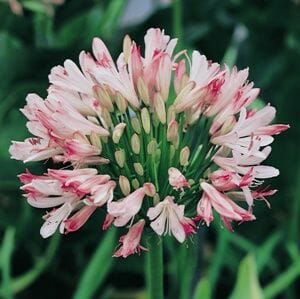Understanding the Art of Agapanthus Care: Vital Steps for Healthy And Balanced Development and Vibrant Blooms
In the realm of cultivation, the cultivation of agapanthus stands as a gratifying undertaking for those who seek to nurture these elegant blooming plants. From picking the ideal selection to mastering trimming strategies, the journey in the direction of cultivating growing agapanthus plants is diverse and holds the essential to unlocking the full potential of these organic gems.

Choosing the Right Agapanthus Selection

When picking the right Agapanthus variety for your yard, take into consideration elements such as climate suitability, bloom shade, and growth routine. Agapanthus, commonly referred to as Lily of the Nile or African lily, can be found in a selection of shades varying from shades of blue and purple to white. Choose a bloom shade that enhances your existing yard scheme to develop an unified landscape. Furthermore, consider the environment in your area to make certain the Agapanthus variety you choose can thrive in your details problems. Some selections are much more tolerant of chilly temperatures, while others choose warmer climates. Understanding the development practice of various Agapanthus ranges is vital for correct placement within your garden. Some ranges have a clumping development practice, ideal for containers or boundaries, while others have a more dispersing nature, appropriate for ground cover or mass plantings. By carefully reviewing these factors, you can choose the ideal Agapanthus range to improve the elegance of your garden.
Suitable Planting Problems
Considering the optimum ecological requirements is crucial for effective Agapanthus farming. Agapanthus plants are delicate to chilly temperature levels and need to be shielded from frost during wintertime months.
To make certain healthy and balanced growth and vivid blooms, plant Agapanthus light bulbs at a deepness of concerning 2-4 inches and room them 8-12 inches apart. Including raw material, such as compost, to the soil can enhance water drainage and fertility, promoting robust root advancement. Mulching around the base of the plants assists maintain wetness and reduces weed development. Normal watering is important, specifically throughout the growing period, to maintain the soil continually moist yet not saturated.
Watering and Fertilizing Tips
Maintaining proper dampness degrees and supplying crucial nutrients are crucial aspects in the care routine for Agapanthus plants. It is essential to strike an equilibrium when it comes to watering Agapanthus. If overwatered, these plants favor continually moist soil yet are susceptible to root rot. Throughout the growing period, water deeply when a week, making certain the soil is well-draining to avoid waterlogging. In hotter climates or throughout durations of drought, even more constant watering might be necessary to keep the dirt equally wet. Nonetheless, decrease watering in the winter months to protect against water logged problems.
Feeding Agapanthus is important for advertising healthy and balanced development and respected blooms. Apply a balanced fertilizer, such as a 10-10-10 formula, in the early spring as new development arises. Repeat this application every 6-8 weeks throughout the growing period. Prevent too much fertilization, as it can cause lush foliage at the expenditure of blossoms. Always adhere to the supplier's instructions for correct dilution and application techniques. By complying with these watering and fertilizing pointers, you can guarantee your Agapanthus plants thrive and produce vivid, lasting blooms.
Trimming Methods for Agapanthus
Pruning Agapanthus plants at the appropriate times and with appropriate techniques is vital for preserving their health and wellness and advertising optimum growth and blooming. The optimal time to trim Agapanthus is in late winter season or early springtime before new growth emerges.
Deadheading invested flowers can additionally reroute the plant's energy right into producing more blooms instead than setting seeds. If you want to collect seeds for proliferation, leave some click here for more info flowers to additional reading completely dry and fully grown on the plant.
Keep in mind to utilize clean, sharp devices to make exact cuts and reduce the risk of introducing diseases. Agapanthus. Regular trimming will aid keep your Agapanthus looking neat and healthy while making certain a plentiful display of stunning flowers
Handling Usual Pests and Diseases
After making certain appropriate pruning methods for Agapanthus, it is crucial to attend to typical parasites and illness that can affect the wellness and vitality of these plants. One common bug that affects Agapanthus is the Agapanthus gall midge.
One more common problem is fungal fallen leave area, which offers as dark lesions on the fallen leaves. To stop fungal diseases, guarantee good air circulation around the plants, prevent overhead watering, and eliminate any kind of infected leaves immediately. Furthermore, Agapanthus plants can deal with origin rot if they are planted in badly draining pipes soil. To avoid this, plant Agapanthus in well-draining dirt and avoid overwatering. By being vigilant and taking punctual activity versus bugs and diseases, you can aid your Agapanthus plants grow and produce dynamic flowers.

Verdict
To conclude, understanding the art of agapanthus treatment involves choosing the best variety, giving ideal planting problems, appropriate watering and feeding, suitable pruning techniques, and dealing with common pests and conditions. By following these vital actions, you can ensure healthy growth and vibrant blossoms for your agapanthus plants. Keep in mind to regularly monitor and preserve your plants to promote their total well-being and longevity.
To ensure healthy Your Domain Name and balanced development and dynamic blooms, plant Agapanthus light bulbs at a depth of about 2-4 inches and area them 8-12 inches apart. By following these watering and feeding pointers, you can ensure your Agapanthus plants prosper and generate vivid, long-lasting flowers.
One typical pest that impacts Agapanthus is the Agapanthus gall midget. Furthermore, Agapanthus plants can experience from origin rot if they are planted in inadequately draining soil. By complying with these essential steps, you can make sure healthy growth and vivid flowers for your agapanthus plants.